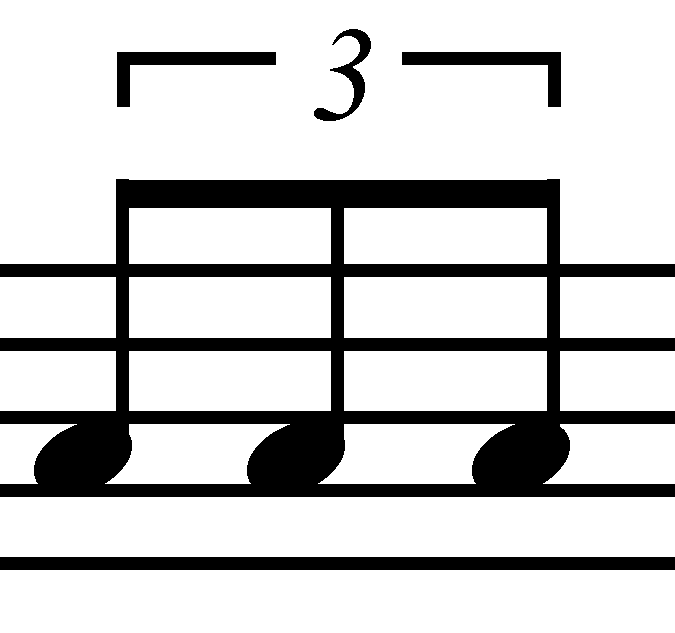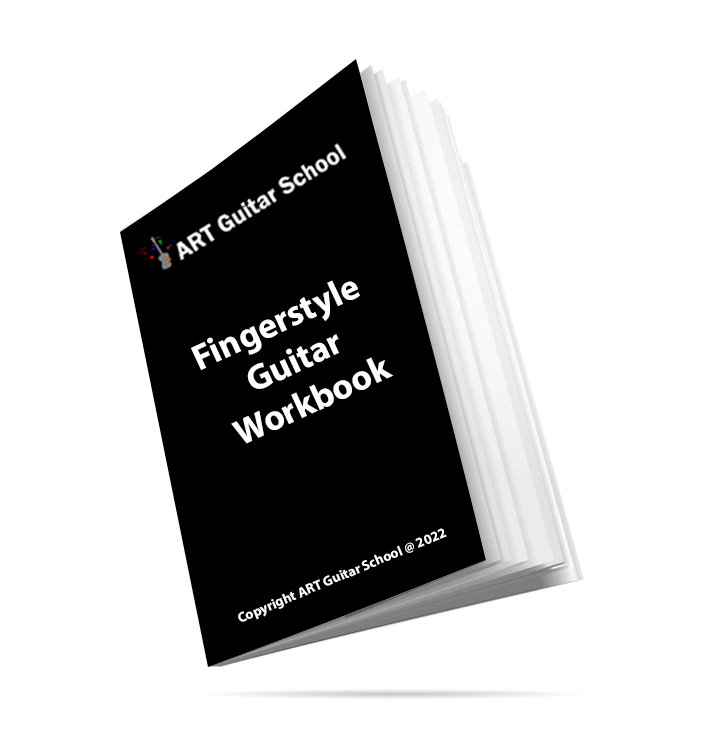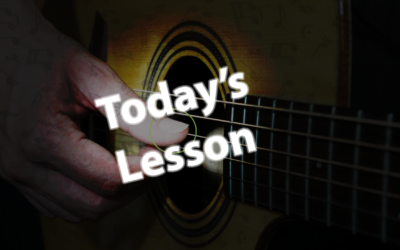One of the most common questions in regards to rhythm is how to play a triplet picking pattern. In order to do so you must first understand how a triplet works.
A triplet is split evenly into three parts within a quarter note. It’s like squeezing 3 eighth notes into one beat however, the duration of each is now slightly shorter due to the limited amount of time to fit each note within that beat.
Rhythm #1
Here is a quarter note pattern to start with. Pluck each note as one beat.
We added a half note at the end to fulfill the measure.

Rhythm #2
Now let’s try an eighth note pattern. Pluck two notes for each beat. They must fit evenly within the quarter note on the down and up beats.

Rhythm #3
Finally, this is the triplet pattern. I would recommend started by plucking only the first string with this rhythm. Count the rhythm as “one and ah, two and ah”.

Here is a video on popular finger picking patterns to start with:
If you were having trouble making the trip it’s even within the beat try using a metronome set a quarter notes 40 BPM and practice playing three notes within each beat.
FOLLOW US ON
Get our FREE Fingerstyle Workbook!
RELATED BLOG POSTS
Fingerstyle Guitar History: Key Moments and Influential Artists
Fingerstyle guitar has a rich history that spans multiple genres and centuries. Understanding the origins of this technique can provide you with inspiration and a deeper connection to the music you’re playing. This post explores the key moments and influential artists who have shaped the evolution of fingerstyle guitar.
Early Classical Fingerstyle Fingerstyle guitar dates back to the early classical guitarists, like Andrés Segovia, who played intricate and sophisticated pieces using their fingers instead of a pick. This style focused heavily on technical mastery and precise finger movements.
Blues and Folk Pioneers In the early 20th century, blues guitarists like Robert Johnson and Mississippi John Hurt helped bring fingerstyle guitar into the mainstream, developing their own unique picking styles that influenced modern blues players.
Modern Fingerstyle Icons Today, artists like Tommy Emmanuel, Andy McKee, and John Butler continue to push the boundaries of fingerstyle guitar, incorporating fast fingerpicking, slap bass, and even tapping into their playing.
Folk Fingerstyle Patterns
Traditional folk music has a unique sound, and fingerstyle guitar plays a big part in that. If you’re looking to learn classic folk fingerpicking patterns, this post will guide you through traditional techniques that use open tunings and simple chord progressions.
What Makes Folk Fingerstyle Unique? Folk fingerstyle patterns are characterized by their simplicity and use of open tunings. Open tunings allow the guitar to resonate in ways that standard tunings don’t, often making it easier to play rich, full-sounding chords with minimal effort.
Popular Folk Fingerstyle Patterns One common folk pattern is the alternating thumb style, where the thumb alternates between bass strings while the fingers play the melody. Another pattern is the “clawhammer” technique, popular in banjo playing, that can also be applied to the guitar.
Using Open Tunings for Folk Music Tunings like Open D (DADF#AD) and Open G (DGDGBD) are commonly used in folk fingerstyle. These tunings make it easier to play traditional folk songs with a fuller, ringing sound.
Advanced Fingerstyle Techniques
Ready to take your fingerstyle guitar playing to the next level? If you’ve mastered the basics, it’s time to dive into more complex techniques that will add sophistication and variation to your playing. In this post, we’ll explore advanced fingerstyle techniques such as rolling chords, hybrid picking, and incorporating percussive elements into your performance.
Rolling Chords Rolling is a technique where you play a chord and let the notes ring in a flowing manner. You can achieve this by plucking the strings in quick succession, letting the sound blend into a smooth, cascading effect. This technique adds fluidity to your playing.
Hybrid Picking Hybrid picking combines using a pick for the bass notes and your fingers for the melody. This technique allows you to play fast, alternating between plucked strings with your pick and your fingers.
Percussive Fingerstyle Incorporating percussive elements into your fingerstyle playing can add rhythm and groove to your performance. You can create percussive sounds by tapping your guitar body or using your fingers to slap the strings. This brings an exciting, rhythmic texture to your music.




0 Comments